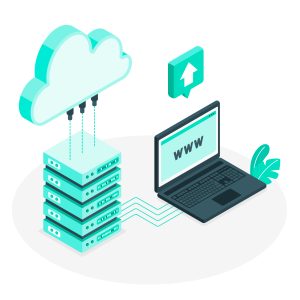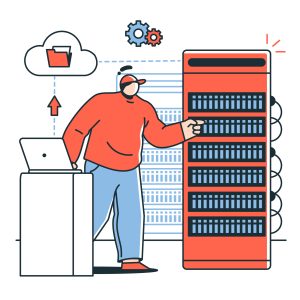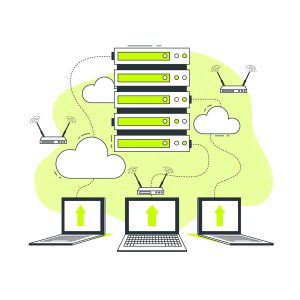In the current, Information Technology world, Virtual Desktop Infrastructure and Remote Desktop Services (VDI vs RDS) are the most utilized terms, and people tend to get confused between both the terms. And for the businesses today both the terms are crucial.
Virtualization offers the most adaptable and flexible infrastructure to give portable and mobile solutions and deliver an efficient experience. To promote virtualization, tools such as RDS and VDIs are broadly used. With RDS and VDIs, you can not only connect from multiple locations efficiently but also brings in a cost-effective solution to business.
What is Virtual Desktop Infrastructure(VDI)?
VDI or Virtual Desktop Infrastructure offers desktop virtualization of every resource stored on a centralized virtual machine(VM). Centralized virtual machine powers all the VDI desktops that need resources and software packages, applications, programs, documents, etc. VDI establishes a connection between the centralized VM machine and the VDI desktops. By this, each user can easily install, uninstall, upgrade, and execute all the functions remotely from various devices at multiple locations.
Mainly there are two models, in a VDI deployment. One is a static or persistent virtual desktop and another one is dynamic or non-persistent. In static mode, there is one-on-one mapping of Virtual Machines to the users. On the contrary, in a dynamic architecture, there exists only one master image of the stored desktop.
Advantages of Virtual Desktop Interface
- Efficient segregation of resources and data between all the VDI users.
- Needs just one single system to function for the centralized server which gradually minimizes the costs.
- It is simple with VDIs to troubleshoot problems and counter issues
- More enhanced security and maintenance
- Processing moves efficiently to VDI servers from specific workstations
Read our other articles:
- Best Ways To Secure Your VPS, Windows & Linux VPS Server
- Benefits Of Unmetered Dedicated Servers
- What is the importance of cloud computing in the IoT revolution?
What is Windows RDS?
Windows RDS or Remote Desktop Services developed by Microsoft Inc is a service that helps multiple users share the same OS remotely. Using a Graphic User Interface(GUI), Windows users can access different applications. The Windows RDS basically needs two devices, the client device will need an RDS client, and a Windows server OS, by which a centralized remote connection could be authenticated. By connecting the remote server with RDS clients, the remote server resources could be easily accessed by the clients remotely on Windows PCs
Advantages of RDS
- Single point of maintenance. The maintenance is done only at the remote server’s management.
- The single installation of a Windows remote server can benefit several user connections. One installation and multiple uses.
- No need for additional Windows licenses for each RDS client.
- Solid Security. Timely backups and security patches.
- Lower costs and saves times
How is VDI better and unique from RDS?
- VDI is not restricted to one type of operating system. By using virtualization software all the desktop servers could be virtualized. On the other hand, with Windows RDS only windows servers could be used.
- Administration and management of the VDI are easier as a simple master image is configured. However, in the case of RDS, the configured desktop image gets visible and presented to all the connected users.
- With VDI, one can have their own virtual server. Every individual OS instances can be hosted on VDI Virtual Machines with all the saved data and applications. On the contrary, Remote Desktop Service runs on a single server via a network connection made by Remote Desktop Protocol (RDP).
- VDI can be configured for customized applications and further for permanently allocated desktops. However, with Windows Remote Desktop Service you do not get that feature.















